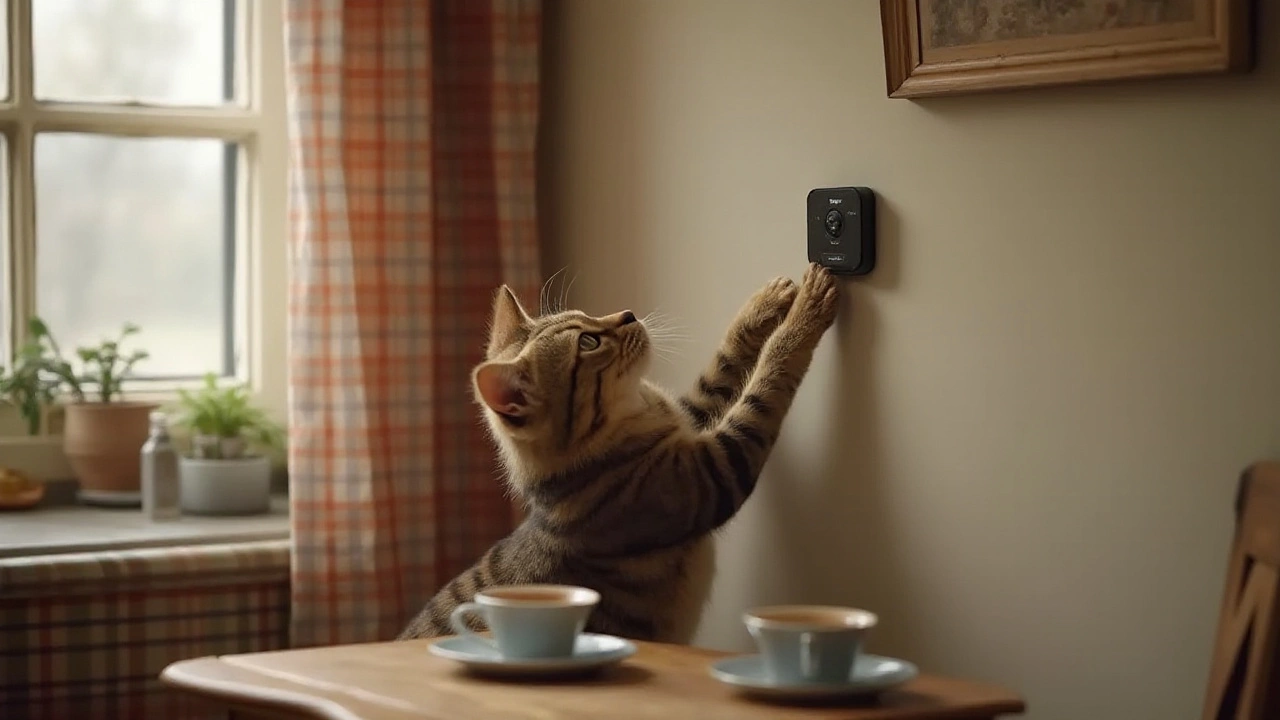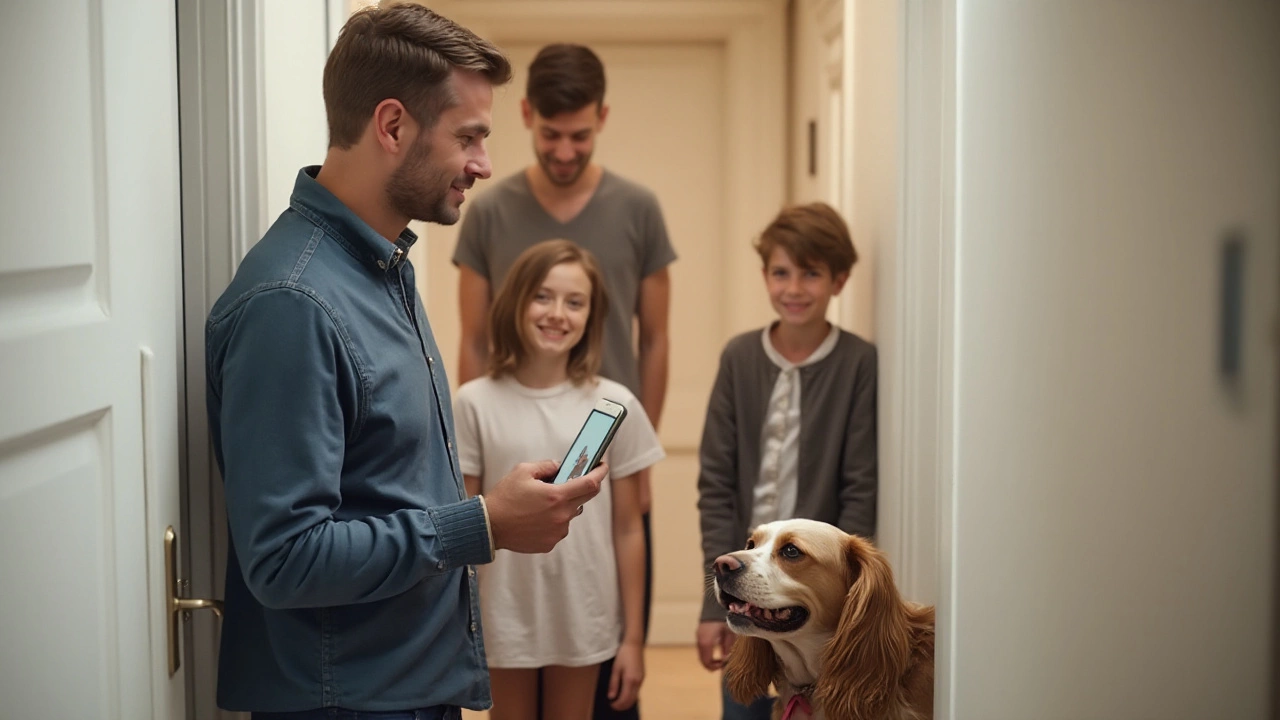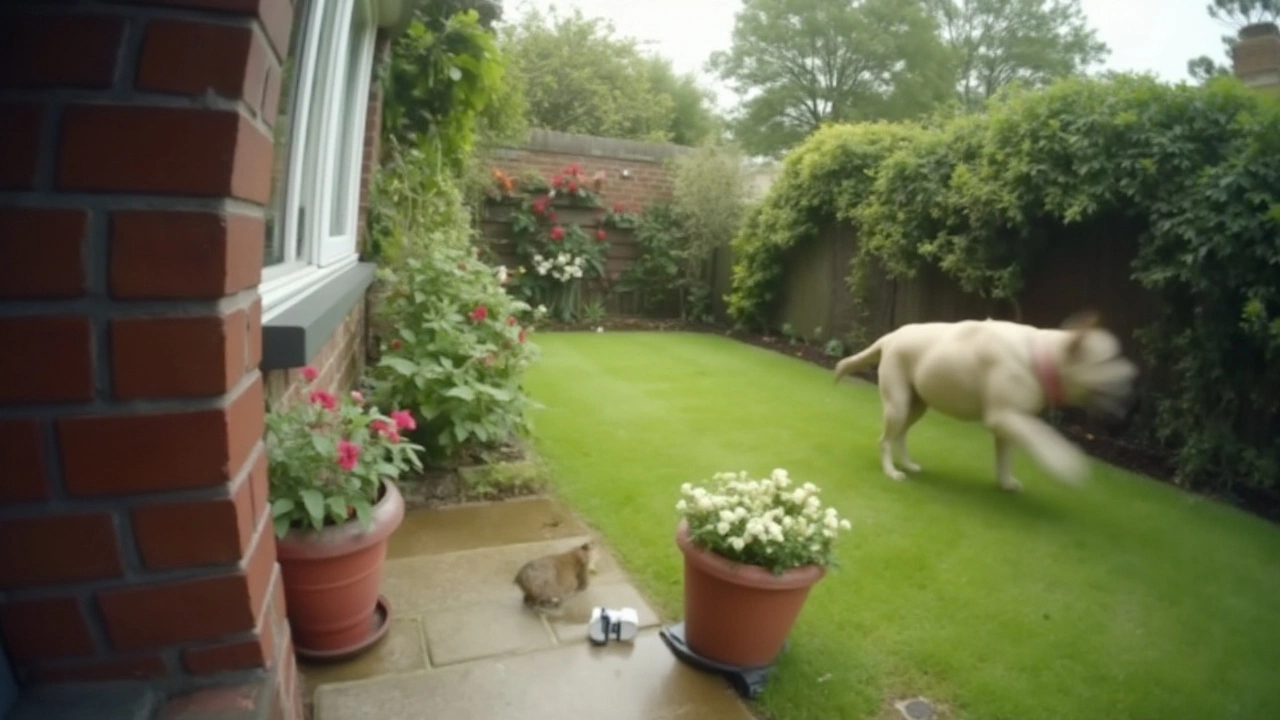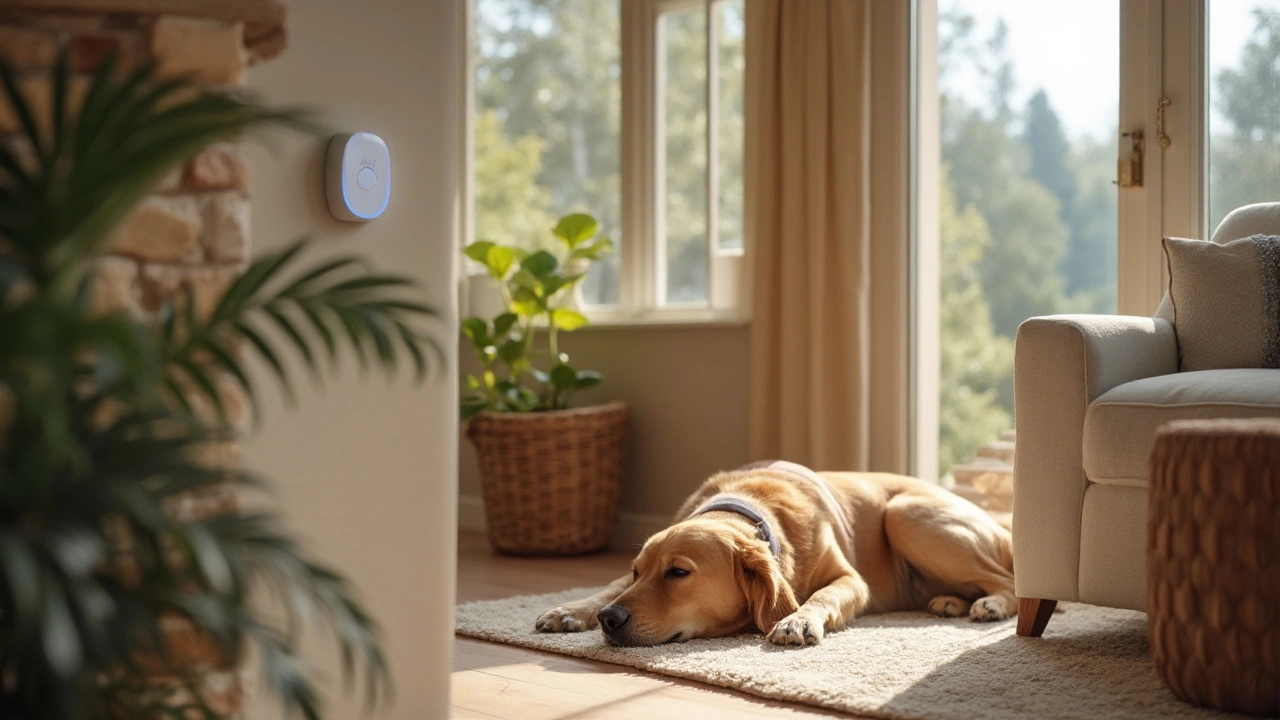In an age where our homes are smart and our gadgets smarter, figuring out how technology fits into a pet-friendly lifestyle can be a bit of a puzzle. Ring alarm systems have become increasingly popular for homeowners wanting peace of mind, but the question remains: are they truly pet-friendly?
Many pet owners have concerns about how alarm systems might affect their beloved cats and dogs. It's important to ensure that these security systems do more good than harm, keeping our homes safe while keeping anxiety in check for man’s best friends. This article will explore the nuances of Ring alarms and offer guidance for pet owners who want a secure yet harmonious home environment.
- Understanding Ring Alarm Systems
- Ring Alarm Features for Pet Owners
- How Pets React to Alarm Sounds
- Tips for a Pet-Friendly Alarm Setup
Understanding Ring Alarm Systems
For anyone stepping into the world of home security, Ring alarms are often top on the list. These systems are designed for simplicity, offering a DIY approach to home protection without overwhelming the user with technicalities. Ring, a subsidiary of Amazon, has carved its niche by providing affordable and user-friendly security solutions. Composed of a base station, contact sensors, motion detectors, and a keypad, Ring systems are engineered for seamless integration into modern homes. The real magic, however, lies in the adaptability. Whether it’s a small apartment or a sprawling home, Ring provides scalable options that cater to varying security needs.
An essential feature of Ring alarms is the customizable nature of their sensors. You can tweak settings based on the unique layout of your home, setting motion sensitivity to levels that accommodate the presence of pets. This is a crucial aspect for pet owners, as nobody wants their cat or dog to set off false alarms every time they chase a shadow. With sensitivity adjustments, the system smartly distinguishes between the movement of a small animal and potential intrusions. Efficiency blends with practicality, making it an attractive choice for any pet guardian.
Many users appreciate the system's compatibility with additional smart devices. This means you can link your alarm to cameras, thermostats, and smart locks, creating an integrated security ecosystem. The Ring app, available on both Android and iOS platforms, serves as the command hub, allowing users to monitor and control their alarms from just about anywhere. The app even facilitates real-time alerts, so pet owners are less likely to miss any disturbances at home. It's like having a ticket to peace of mind, knowing your feathered or furry friends are protected.
Ring has often highlighted the reliability of its systems through rigorous testing. In an era dominated by technological advancements, ensuring security products are foolproof is paramount. According to a statement from Ring, "Our alarms undergo stringent performance assessments to ensure they meet the highest standards of safety and reliability." But the proof, as they say, is in the pudding; user reviews tend to reflect satisfaction with the system's ease of use and effectiveness. So, if you’re considering Ring, you're not alone; thousands of pet owners stand by its reputation.
Moreover, Ring alarms come with cellular backup, a feature that proves invaluable during power outages. This means that your home remains shielded even when the unexpected happens. Such resilience adds another layer to your security setup, ensuring that neither storms nor glitches disrupt the serene sanctuary shared with your pets. For tech-savvy individuals, the option of integrating Ring with voice assistants like Alexa offers convenience like never before. Imagine controlling your alarm system just by asking Alexa to do it for you—it’s as if you brought a slice of the future into your living room.
It's worth noting that the pet-friendly alarms from Ring aren't just buzzwords; they're part of a conscientious design strategy aimed at addressing everyday challenges for pet owners. Creating a protected environment while keeping pets at ease remains a priority for many. With Ring's system, users gain a fortress of security without unsettling the natural rhythm of their pet's life. In our world, where pets are more than just companions—they're family—choosing the right alarm system carries significant weight. Exploring options thoughtfully ensures that security and comfort coexist harmoniously.

Ring Alarm Features for Pet Owners
For households bustling with pets, integrating modern security measures, specifically ring alarms, demands a careful approach. The idea is not just about safeguarding your home but doing so in harmony with your furry companions. Ring alarms offer an array of features designed with both security and sensitivity in mind. One notable aspect is the adjustable motion detection sensitivity. This feature is crucial for pet owners who want to avoid unnecessary alerts triggered by pets’ everyday activities. Adjusting the sensitivity settings ensures that a casually roaming cat or an enthusiastic dog won't inadvertently trip the alarm, causing you undue stress.
Another nuanced yet vital feature is the integration of customizable 'modes'. With Ring Alarm for Pets, you can set specific modes that accommodate a pet-friendly environment. For instance, while the 'Home' mode might enable full surveillance when you're out, a 'Pet' mode can be customized to ignore low-level movements from your pets. This ensures that while your premises stay under watch, your pets have their freedom. Additionally, many users appreciate the system's user-friendly app, which allows for easy monitoring and adjustment of these modes whenever needed, even remotely.
The audio alarms are another point of consideration. It's widely understood that certain sounds can be distressing for pets, particularly those with heightened hearing abilities like dogs. Ring alarms offer ways to opt for silent alerts via mobile notifications over traditional audible alarms. This adaptation is especially beneficial in reducing stress for your animals without compromising on security alerts for you, the owner. According to Dr. Emily Carter, a noted animal behaviorist,
"Reducing unexpected loud noises greatly assists in lowering anxiety levels for pets, maintaining a calm household."
Ring's partnership with smart devices, like Alexa, adds another dimension of control for pet owners. By integrating the alarm system with your home voice assistant, you can operate or disarm the system hands-free. This technology is particularly useful for pet owners who are often managing pets when entering or leaving their homes. You can instruct Alexa to turn off the alarm as you carry in your groceries or walk your dog, making daily routines smoother and less disruptive. For tech-savvy pet owners, this integration can make a significant difference in household management.
Perhaps one of the lesser-known but essential features is its encrypted security system which protects not just from physical intrusions but also cyber threats. This is important, considering that any device connected to the internet can potentially become a target. This encryption reassures that your home remains a safe haven not only from human intruders but also in the virtual realm, securing you and your pets’ privacy and data. Pets become like family, and treating their security with the same seriousness means addressing all areas where threats might arise, even digital ones.

How Pets React to Alarm Sounds
For many of our furry companions, the world is perceived through a rich tapestry of sounds, smells, and sights. When a Ring alarm goes off, emitting sharp and piercing tones, our pets’ reactions can vary significantly. Some pets might jump at the sound, their ears perking up in sudden attention. Others might scuttle for cover, dashing under beds or sofas, seeking solace from an unfamiliar noise.
It’s important to recognize that animals, much like humans, have varied thresholds for noise tolerance. Dogs, for example, have an incredible range of hearing, detecting frequencies between 40 Hz and 60,000 Hz, compared to humans who hear only up to 20,000 Hz. Cats surpass even this range, making them more sensitive to the pitches emitted by alarms. This sensitivity means that a sound meant to alert humans can sometimes be overwhelming for pets, creating unnecessary stress.
Behavioral Responses
Observing your pet’s behavior when a pet-friendly alarm like Ring is activated can provide insights into their comfort levels. While some animals might exhibit signs of distress, such as whining or pacing, others might become alert but remain calm and observant. Understanding these reactions is key to ensuring their well-being in an environment enhanced by technology.
One interesting aspect involves the adaptation of pets over time. Animals often learn from repetitive exposure. For instance, if a dog realizes that the alarm sound is consistently tied to the harmless opening of a door, the initial fear or surprise can diminish. It’s similar to how many dogs eventually find vacuum cleaners less menacing after realizing they're a regular, if somewhat noisy, part of household life. Yet, patience is crucial in this process, as pressuring a quick adjustment only exacerbates anxiety.
According to Dr. Emily Weiss, a behavioral expert, "While short-term exposure to loud sounds can trigger stress, continuous, non-threatening exposure can help desensitize animals, turning the alarming to the mundane over time."
Steps to Mitigate Stress
To ease the experience for pets, consider these strategies:
- Volume Control: If the system allows, setting the alarm sound to a lower volume can help mitigate initial shock for your pets.
- Desensitization: Exposing pets to the sound in controlled settings where they feel safe can help them become accustomed to the noise.
- Create Safe Spaces: Providing a quiet place where pets can retreat during alarms can help reduce stress.
- Reinforcement: Positive reinforcement during exposure to alarm sounds can help create a more neutral association.
Balancing home security with pet comfort is achievable with a little foresight and understanding. Creating an environment where pets can coexist peacefully with technology involves keen observation and small adjustments ensuring both security and pet comfort coexist harmoniously.

Tips for a Pet-Friendly Alarm Setup
Creating a pet-friendly alarm setup may seem like a daunting task, but it's entirely achievable with some thoughtful planning and the right equipment. The key is tailoring your pet-friendly alarms to avoid unnecessary stress on your furry companions while maintaining high standards of home security. One of the critical aspects to consider is the placement of your sensors. Many systems, including Ring alarms for pets, are designed to accommodate active animals that might roam freely throughout the day and night.
To avoid your pet inadvertently triggering a false alarm, it's wise to utilize motion detectors that are pet-immune. These advanced detectors can differentiate between the weight and movement of a human intruder and a pet, typically recognizing animals under 50 pounds. Additionally, strategic placement of these sensors is crucial. Position them at a height that aligns with human movement but overlooks pets wandering below. This ensures that your security is robust without disrupting your animal's normal behavior.
Sound is another significant component in setting up an alarm system suitable for pets. Devices with adjustable volume controls are beneficial, as high-pitched or loud alarms can stress or even harm pets' sensitive hearing. Features like this allow your home security pets to adapt to your security system, rather than being startled into distress. It's also helpful to familiarize your pets with alarm sounds by periodically testing them.
Another practical measure involves choosing an alarm system with mobile alerts. This way, if an alarm is triggered, you can quickly check in through connected cameras to determine whether your pet was the culprit. Having real-time video access to your home can offer invaluable peace of mind, allowing you to respond appropriately whenever an alert pops up.
There are multiple layers to crafting a serene coexistence between your security setup and your pets. Some homeowners find value in consulting professionals or behavioral experts who might offer insights based on the specific needs of your animals.
"Ensuring your home is secure while accommodating the needs of your pets requires not only an understanding of technology but also an understanding of animal behavior," says Dr. Jane Thomason, an expert in pet behavioral sciences.This combination of tech-savvy and animal comprehension makes for a harmonious living space.
A small but significant tip is to keep an eye on the environment around your motion sensors. Lingering curtains or swaying plants near sensor fields can cause false alarms, especially in homes with curious or energetic pets. Keeping potential distractions out of reach from the sensors promotes smooth operation. Lastly, remember that practice makes perfect. Conducting regular trials where you simulate different scenarios can help both you and your pets become accustomed to the system's functions.

